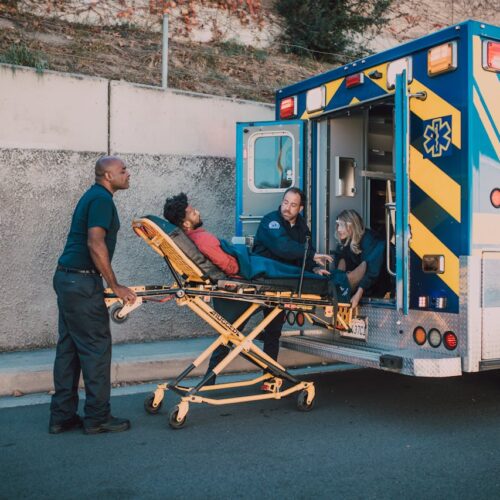Experts Agree on Standard System to Understand and Reduce Risk of Recidivism
The National Reentry Resource Center (NRRC) released in January A Five-Level Risk and Needs System: Maximizing Assessment Results in Corrections through the Development of a Common Language, a white paper geared toward researchers, practitioners, and policymakers who share the goal of reducing recidivism by improving the application of risk and needs assessments. Developed with funding support from the U.S. Department of Justice’s Bureau of Justice Assistance (BJA), the white paper presents a model to support the implementation of Risk-Need-Responsivity (RNR) principles through a standardized five-level risk and needs assessment system.
Criminogenic risk and needs assessments provide a roadmap for effective correctional rehabilitation initiatives. When properly understood and implemented, they can help correctional organizations provide the types and dosages of services that are empirically related to reductions in reoffending.
Although risk and needs assessment instruments are all intended to measure the same things, the field has not as yet set standards or specifications about the terminology used to describe risk and needs categories across all of these instruments. Over the past two years, the NRRC, in partnership with Public Safety Canada, has facilitated efforts to standardize the terminology associated with risk and needs levels and improve the interpretation and application of risk and needs assessment results in correctional settings.
With expert guidance from a diverse group of collaborators, including researchers, risk and needs assessment instrument developers, practitioners, and leaders in the field; and drawing on extensive review of the literature and related research, observations of programs in the field, feedback from national experts, several multidisciplinary forums and advisory group discussions, and a rigorous review process, the paper provides the following:
- An overview of the RNR principles, which are used by criminal justice professionals to identify a person’s risk of recidivism and allocate resources and deliver tailored services accordingly
- A standardized five-level risk and needs assessment system to inform case planning, guide how corrections and criminal justice professionals classify risk and needs, and help identify people who can benefit most from intervention
- Case examples to illustrate each of the five proposed risk and needs levels
Additional research will be conducted to support the development of the five-level system for widespread use in the U.S. Through a partnership with the NRRC, Dr. Faye Taxman of George Mason University and Dr. Daryl Kroner of Southern Illinois University will examine multi-year data—including recidivism data and information on risk and needs—from various sources to further refine the five risk and needs levels for practical application in correctional settings. Upon refinement and validation of the five-level system, the NRRC and its partners then plan to pilot test the model in several sites across the country.
Read the white paper here.
In response to growing calls for police reform in New Jersey, particularly following the shootings of Najee Seabrooks…
Read More Three Things to Know About New Jersey’s Groundbreaking Community Response Legislation
Three Things to Know About New Jersey’s Groundbreaking Community Response Legislation
In response to growing calls for police reform in New Jersey, particularly…
Read More Apply Now: Join a Learning Community for Community and Crisis Response Teams to Improve Responses to Youth
Read More
Apply Now: Join a Learning Community for Community and Crisis Response Teams to Improve Responses to Youth
Read More
 Apply Now: Join a Learning Community Focused on Substance Use and Overdose Community Response Programs
Read More
Apply Now: Join a Learning Community Focused on Substance Use and Overdose Community Response Programs
Read More













